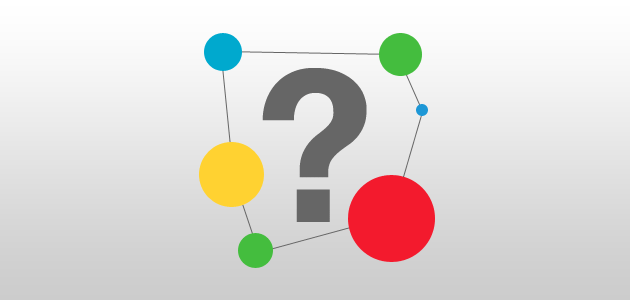Is affiliate marketing ready to embrace a post impression model?
Notice: Undefined variable: post_id in /home/foundco/public_html/wp-content/themes/pivot-child/inc/content-post-single-sidebar.php on line 48

There is much talk of late, that post impression advertising should be able to work on the CPA model and, thus, within the affiliate channel. However, as much as we’ve collectively evolved the sector to where it is today, we simply aren’t geared up to embrace this model. For now, anyway.
Post impression attribution relates to a consumer being served an ad, though not necessarily taking any action to click through on the ad. Either way, the ad will log an impression, or a view. An advertiser who works to a post impression model will pay for that impression. Post click attribution reflects direct action by the consumer to click on the advert served. Embracing post impression within affiliate marketing could see impressions overwriting clicks.
Affiliate marketing, since inception, has focused on a last click model, resulting in affiliates looking at ways to not just initiate a consumer’s interest in a brand or product, but to ensure they complete the journey, ultimately driving the last click. The fact that the purchase path can be so fragmented is one of the reasons that affiliate marketing shines – affiliates are always looking for new ways to secure that final click or, to use a very topical analogy, to be the one who puts the ball in the back of the net.
Not surprisingly, the IAB website therefore clearly defines the channel as being about last click referral: ‘If a consumer visiting the affiliate’s site clicks on an advertisement and goes on to perform a predetermined action (usually a purchase) on the advertiser’s site then the affiliate receives a payment. It is this cost per action model that defines affiliate marketing and sets it apart from other channels.’
Okay, maybe in the past, the channel has not rewarded affiliates who contributed to the journey – it was, and still is, very much perceived as being about the striker who claims the goal, not the defender who took the free kick, or the midfielder who knocked it into the striker’s path. But to be fair, this in itself is driving even more discussion, with many feeling that the last click model is flawed.
However, post impression is a different model entirely. Although I firmly believe that display advertising does help to encourage a consumer along the purchase path, there is still no explicit distinction between high correlation (a consumer viewing an ad and purchasing from that advertiser)and high causation (a consumer viewing and clicking on an ad, and then purchasing from that advertiser). The latter, at least, illustrates intent. And for those who would argue that a click that resulted in a 30 day lag to sale is equally leaning towards correlation rather than causation, programme-dependant, I agree. The former may have contributed in some form, but it equally may never have been noticed.
Now if we take a closer look at the post impression model and its growth in Europe – particularly Germany – there is a greater acceptance of post impression within affiliate marketing. The German affiliate market is largely driven by digital agencies, all of whom embrace post impression as a measurable online metric. And, of course, it is…. but does this mean that this model can fit within the affiliate model, driven by causality? If we embraced post impression within affiliate marketing, are we really working to a CPA model – the defined affiliate model of true action – or basing an assumption on the impression having some impact? CPAHC doesn’t have quite the same ring to it. So is the last click model flawed for CPA? Should we be looking beyond it?
In my opinion, not necessarily so. It’s a great reward for innovation and entrepreneurialism – through ever-evolving search marketing initiatives, voucher code and cashback site emergences, social media exploration and more. It rewards flatly on one metric – the striker wins. And through this model, it forces the market to push the boundaries, to seek out new ways of converting clicks into customers.
Affiliate marketing is now very much perceived as low-risk marketing – cost per acquisition, easy budgeting, action-oriented and not too difficult to manage. But what risks do post impression campaigns pose? Does this encourage the search affiliate to claim post impression on search adverts that have been viewed but not clicked upon? The content affiliate who wants every impression to be rewarded, no matter how targeted the site is? The voucher code site that drew the consumer in but didn’t have a voucher code to offer? Post impression is open to abuse. Affiliates could loading up a multiude of banners across site inventory which has high unrelated traffic, and then earn on the back of the post impression model. Are the networks even set up to manage this, both technically and administratively?
I am all for development and evolvement of the digital marketing landscape; to be able to get to a point where advertisers can truly understand the contribution each media touch-point plays in a consumer journey is a great place to be. However, without true research and understanding, can we really reward on an assumption? It’s a whole new ball game that needs greater exploration, and this exploration shouldn’t’ be solely within the confines of affiliate marketing. As always, affiliate marketing is the pioneering industry – multi-attribution is a hot topic, with some elements of multi-attribution starting to be introduced to the space. But, will the introduction of post impression and multi-attribution modelling simply take everything away from affiliate marketing that’s made it the success it is today – the hunger, desire and passion to always be one step ahead of the opposing team, striking that goal into the back of the net? Possibly so.